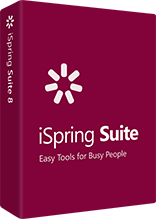5 Digital Storytelling Assignments in the Classroom

Digital storytelling takes advantage of the vast array of today’s technological options to tap into storytellers’ creativity. This technique uses animation, video, music, images, and other multimedia to compile a narrative. The following 5 examples of digital storytelling in the classroom demonstrate that it can be used for its surface purpose: to develop narratives or practice a foreign language, as well as in content courses to present and discuss abstract concepts and material.
1. Creative writing assignment
Individually or in pairs (if this is a first digital storytelling assignment, pairs is probably a better idea), students tell a particular type of creative story, per the assignment. Assignments can include telling a story about a personal experience that they have had and embellishing it so it is partially fictional, or something completely fictional. They can also write something creative as a spin-off or supplement to another class concept, such as telling a fictional story about a day in Socrates’s life to supplement a unit on studying some of his philosophy. This is also a good assignment for a language learning class, where the telling of the story itself is the goal, rather than the ideas that are contained within the story. Target genres can also be assigned if you like, such as humor, adventure, drama, or fantasy.
Rather than writing the entire story and turning it in in written form, students develop the script, then illustrate the story and narrate it as appropriate.
For this assignment, students will employ a variety of software options to tell a creative fictional or personal story. One option is to have the story be no more than 95% narrated, and can be much less than 95% narrated if you wish. The additional portion of the story should be told nonverbally using images on the screen. A minimum of 3 different software formats should be included (e.g. animation, PowerPoint or other presentation software, images, music or other sound track).
Tip! Most digital storytelling assignments involve the use of computer speakers. Take care of this in advance, #2 and #3 from this list are great for classroom use.
Suggested requirements:
- Final video length: 2-4 minutes.
- Time for completion: 1 month
2. Science assignment
Digital storytelling assignments do not have to stop at personal or creative writing. These types of assignments can add flair and creativity to other subjects as well, and present concepts in new and interesting ways. Such creative presentations of topics within the disciplines will help students acquire the material, for both the group of students constructing the story as well as the recipients of the story. For digital storytelling within the disciplines, it is recommended to assign the story to small groups rather than individual students, because these are more challenging assignments and more contributors should make for higher quality production.
In small groups, students use digital storytelling to define and describe a particular scientific concept.
Examples:
- cell growth and division
- habitat and diet of a certain animal species or species family
- skeletal system growth, wear, strengthening, and deterioration
- Anything that has a process is a good topic for a digital storytelling assignment, as is anything that needs description, such as a certain animal’s habitat to support its diet.
Suggested requirements:
- Length: 4-6 minutes
- Full script is due one week after the assignment.
- Full story is due one month after the assignment.
This can also be used for larger concepts, and extended to a quarter-long project if you like. In this case, the total length should be 12-15 minutes.
3. Math or Statistics assignment
In small groups, each group is assigned a particular statistics concept to present. All groups can approach the same concept if it is particularly difficult and students are generally struggling with it, or each group can present a different concept.
Students must creatively develop a story to illustrate the concept. This is a large extension of a word problem. Students create a story, with characters, action, and character problems to solve, to illustrate the need for the concept and the particular use of the concept. Statements of “why only this will help and no other approach” should be included. This will include statements of other options and why those other options are infeasible for resolving the problem at hand.
Examples:
- develop a scenario for which regression statistics is necessary, and no other statistical test will resolve the problem. Include statements of why no other statistical test will resolve the problem
- develop a scenario requiring linear algebra to resolve. Include statements of why no other approach will meet the needs of those in the situation.
Suggested requirements:
Students should use a minimum of 3 different software tools in their presentation.
Length: 2-4 minutes (you don’t want the students getting bogged down in the narrative, as will likely be the temptation with a longer assignment. So, keeping it short is designed to keep the focus on the concepts, with the narrative supporting the concepts.)
- Full script is due one week after the assignment.
- Full final product is due one month after the assignment.
4. History/anthropology/culture compare/contrast assignment
The social sciences are an easy and logical extension of the digital storytelling technique since the social sciences are inherently about people. Thus, it’s a short jump from the personal or creative fiction narrative to illustrating a concept in the social world. History can easily be told using this technique, as the students make a certain set of events in history come alive in the present via digital storytelling. Similarly, studies of faraway lands and their people can be brought into the classroom using digital storytelling. This enlivens the topic for the learners, as they are participating in both the story construction and in viewing the story being told by their peers. It can be a highly effective way to teach these topics and achieve and retain student engagement in areas that may be traditionally low in terms of student interest.
Individually or in pairs (especially for younger learners), students discuss two particular related topics via digital storytelling. The assignment is to create a character or cast of characters, and tell the story through the character(s) developed, as if those characters were living and experiencing these events first-hand.
Examples:
- Compare and contrast the social mores of 19th century Victorian England with those of 21st century Elizabethan England.
- Compare and contrast Islam with Judaism.
- Compare and contrast the rise of the Ottoman Empire with the rise of the ancient Chinese Empire
- Compare and contrast Roman architecture with Bavarian architecture, circa 20th century
- Compare and contrast the art of the Renaissance with the art of the Baroque period
Suggested requirements:
- Students should use a minimum of 3 different software tools in their presentation.
- Length: 5-7 minutes (longer if the assignment expectations and timeline are larger)
- Full script is due one week after the assignment.
- Full story is due one month after the assignment.
5. Argument assignment
Argument writing is one of the most difficult types of writing, and argument storytelling one of the most difficult uses of the digital storytelling technique. This approach requires a great deal of creativity and a lot of thinking. First, the arguments need to be crystallized and solid, then creativity needs to be explored to determine ways to present those arguments via digital storytelling tools. It is recommended to have students peruse samples available on the internet to gain a clearer understanding of what an argument would look like in a digital story.
In groups, students illustrate a particular perspective and make a compelling argument using digital storytelling techniques. The script of a digital story argument will not likely look exactly like an argument paper will look. An argument essay has one essential audience member: the grader. A digital story, however, has numerous audience members. The argument needs to be presented in a way that is compelling to all audience members.
One way to achieve this is to create a main character. Through that character, the events that transpire involving that character, the character’s experiences as shown in the story, and expressions of the character’s thoughts and feelings, the argument can be conveyed.
Suggested requirements:
- Students should use a minimum of 3 different software tools in their presentation.
- Length: 4-6 minutes
- Full script is due 10 days after the assignment. (this script is a little more challenging, so a little more time to develop it is in order)
- Full story is due one month after the assignment.
Assignments can be given to students individually, in pairs, or in groups of 3-4 students. Because this technique strays beyond the traditional assignment, it requires a good deal of outside-the-box thinking. Thus, the more challenging the assignment, the more students should be involved.
Assignments can be short, with 2-3 week deadlines, on a single concept. They can also be mid-range, giving a month or so on a larger or more complex concept, or even quarter-long assignments that emphasize core course objectives. As students gain experience in developing digital stories, the assignment time can be reduced.
The narrative is the most logical use of the digital storytelling approach. However, there are as many ways to use digital storytelling as there are genres of writing. Indeed, digital storytelling techniques can be used for any type of presentation, on any subject. Below are the genres of essay writing, and digital storytelling can be adapted to any of these. Due to the challenges of reducing an abstract argument to images and video, the argument and critical genres especially may be more effective with groups rather than as individual assignments, at least for the first assignment.
- Narrative (the cleanest, most obvious connection for digital storytelling)
- Descriptive
- Definition
- Process
- Compare/contrast
- Cause and effect
- Argument
- Critical
Any writing style can be adapted to the digital storytelling genre, with a little creativity.
Resources
A great way to develop digital stories is to use Microsoft PowerPoint together with iSpring Suite. This PowerPoint add-in that allows story creators to turn their PowerPoint presentations into an engaging video, mobile-ready interactive presentations, or more. It also makes it possible to create a story with a voice over like the one below.
Conclusion
Digital storytelling is the modern version of the classic narrative, and can be used in any discipline or course, and with any genre of essay writing. In the classroom, digital storytelling assignments offer advantages that include heightened student engagement in the subject, creativity, problem-solving, and likely interaction and group dynamics skills, not to mention increased literacy with software and exploration of new software. Whether assigning each group different topics or the same topic to all groups, students benefit immeasurably from using this approach to the material – just remember to be respectful of the learning curve, which can be quite steep (and frustrating and time-consuming) when approaching new software.
If you have any other examples of digital storytelling in mind, feel free to share your ideas in the comments below.

